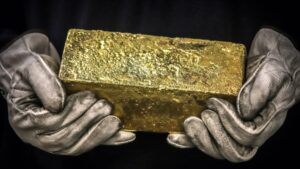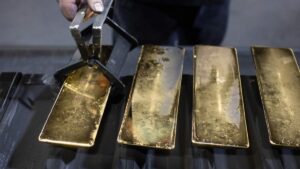ASX explorers are uncovering mountains of gold in Argentina

Pic: Schroptschop / E+ via Getty Images
Argentina sits in the same mineral-rich rocks as South American neighbour Chile, home to some truly monstrous gold and copper mines.
And yet Argentina’s international mining and exploration industry is still in its relative infancy.
Case in point: Between January and September 2020, Chile’s mining exports were worth $US26.7 billion.
For 2020 as a whole, Argentina’s mining exports – mostly lithium, gold and silver — will be worth about $US2.4 billion.
“Argentina is hellishly underexplored compared to Chile,” Challenger Exploration (ASX:CEL) managing director Kris Knauer told Stockhead.
“There’s a lot of interesting and highly prospective geology in Argentina. I think it could become a new go-to mining destination, like Ecuador over the last six years.”
Most Argentinean gold mines are held by US or Canadian listed companies, so apart from lithium, there hasn’t been much in terms of ASX exposure – until recently.
A tiny contingent of ASX listed gold juniors, headed by Challenger Exploration and E2 Metals, are enjoying outstanding success at their respective projects.
When Challenger kicked off a maiden drilling program on its high-grade Hualilan gold project in September last year it had a market cap of $19m.
Mostly dormant for the last 15 years, this project had a big historical drilling database and a non-JORC (unofficial) resource of 627,000oz grading 13.7g/t gold “which remained open in most directions”.
That maiden drilling program was a success. Highlight intercepts like 6.1m at 34.6g/t gold, 21.9g/t silver, 2.9 per cent zinc rerated the company into a ~$95m stock.
Challenger – which has just raised $20m for a monster drill program — is now worth about $140m.
“We now have five rigs running on site to get a resource out first quarter next year,” Knauer says.
“The challenge for us at the moment is that every second hole is a positive surprise and its become ‘geez, we really need to get these next five holes in the resource as well’.
“The initial target is to get more than 1 million ounces, but it will be the first of quite a few resource upgrades to come.”
The major miners are already watching, Knauer says.
“I know that there is a couple of majors tracking us,” he says.
“They requested meetings at the Precious Metals Summit. I was quite shocked they knew who we were, and what we were doing.”
Fellow Argentinean gold explorer E2 Metals (ASX:E2M) has just enjoyed a re-rating event of its own.
In late October the ~$20m market cap explorer made a “genuine new greenfields discovery” at the Conserrat project in Argentina, intersecting an incredible 18m at 47g/t gold and 208g/t silver.
The hit at the Mia prospect “compare with the best gold and silver epithermal vein systems globally with respect to the grades and thickness”, E2 managing director Todd Williams says.
“The depth to mineralisation provides further encouragement being only 50 vertical metres below the surface,” he says.
“This is a watershed moment for E2 Metals that confirms the outstanding potential of the Conserrat project, with many Mia-style vein targets still to test.”
The company is now worth $118m.
Challenger and E2 were recently joined by new IPO Pathfinder Resources (ASX:PF1).
E2’s success came a great time for Pathfinder, which has just completed the acquisition of the King Tut gold and cobalt project in the La Rioja Province of Argentina.
“It’s quite incredible timing for us. When we initiated discussions with the vendors of this project earlier his year, Argentina was not on the radar for Australian juniors,” exec chairman Shannon Green told Stockhead.
“We came to market last week with a couple of ASX-listed juniors in Argentina doing extremely well.
“We hope to emulate that.”
Back in the day, King Tut produced gold and cobalt at grades of up to 28 grams per tonne (g/t) gold and 2.85 per cent cobalt from both surface and underground workings.
The company aims to start drilling in the first quarter of next year, subject to COVID restrictions in South America, to deliver a resource within its first year.
Underdone mining jurisdictions like Argentina often have a ‘moment’ when markets finally realise how big the opportunity really is, Green says.
“I did two reasonable stints in Guinea, West Africa, between 2012 and earlier this year,” he says.
“When I first went into Guinea in 2012 it was difficult to get someone to have a conversation about looking at a project, never mind funding one.
“Now the money being poured into mining projects in Guinea is colossal.
“Part of our rationale for going into Argentina is that we can see that it’s very similar Chile geologically, but unexplored and underexploited.
“We see a huge opportunity.”
Related Topics

UNLOCK INSIGHTS
Discover the untold stories of emerging ASX stocks.
Daily news and expert analysis, it's free to subscribe.
By proceeding, you confirm you understand that we handle personal information in accordance with our Privacy Policy.








